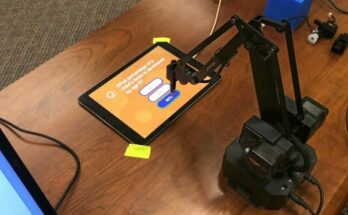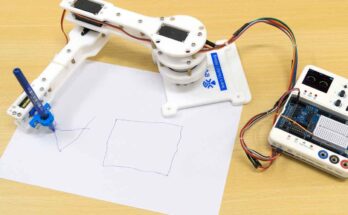Table of Contents
- Introduction of Drone Parts
- Understanding Drone Parts
- Frame and Body
- Motors and Propellers
- Flight Controller
- Electronic Speed Controllers (ESCs)
- Batteries and Power Systems
- Remote Control System
- Sensors and GPS
- Camera and Gimbal
- Telemetry Systems
- Payload and Mounting Options
- Propulsion Systems
- Safety Features
- Maintenance and Upkeep
- Conclusion
- References
Introduction
Unmanned Aerial Vehicles (UAVs), commonly known as drones, consist of various components that work together to enable flight and functionality. This article provides an in-depth exploration of drone parts, highlighting their anatomy and functions in aerial systems.
Understanding Drone Parts
Drone parts encompass a wide range of components, each serving a specific purpose in the operation and performance of UAVs. From the frame to the payload, understanding the anatomy of drones is essential for enthusiasts, hobbyists, and professionals alike.
Frame and Body
The frame serves as the structural backbone of the drone, providing support and housing for other components. It comes in various materials, including carbon fibre, aluminium, and plastic, offering durability and lightweight properties suitable for different applications.
Motors and Propellers
Motors and propellers are responsible for generating thrust and lift, enabling drones to achieve controlled flight. Brushless motors, paired with efficient propellers, provide the necessary propulsion for manoeuvrability and stability in the air.
Flight Controller
The flight controller acts as the brain of the drone, processing inputs from sensors and user commands to stabilise and control its movement. It utilises algorithms and software to maintain stability, adjust altitude, and navigate according to predefined flight paths.
Electronic Speed Controllers (ESCs)
ESCs regulate the speed and direction of the motors, translating commands from the flight controller into precise movements. They adjust the power supply to the motors based on throttle input, ensuring smooth and responsive flight control.
Batteries and Power Systems
Batteries supply the electrical energy needed to power the drone’s components, including motors, flight controller, and onboard electronics. Lithium polymer (LiPo) batteries are commonly used for their high energy density and lightweight characteristics, providing sufficient power for extended flight times.
Remote Control System
The remote control system, also known as the transmitter, allows operators to communicate with the drone wirelessly. It consists of a transmitter, receiver, and antenna, enabling users to send commands for flight control, camera operation, and other functions.
Sensors and GPS
Sensors such as accelerometers, gyroscopes, and magnetometers provide data on the drone’s orientation, altitude, and position in space. GPS receivers enable autonomous navigation, waypoint tracking, and return-to-home functionality, enhancing the drone’s autonomy and reliability.
Camera and Gimbal
Camera systems equipped with gimbals capture aerial footage and imagery with stability and precision. High-definition cameras, thermal imaging cameras, and multispectral cameras are commonly used for various applications, including photography, videography, mapping, and surveillance.
Telemetry Systems
Telemetry systems transmit real-time data from the drone to the ground station, providing feedback on flight parameters such as altitude, speed, battery voltage, and GPS coordinates. This information enables operators to monitor the drone’s performance and make informed decisions during flight.
Payload and Mounting Options
Drones can be equipped with various payloads and accessories for specific tasks and applications. Payload options include sensors, cameras, LiDAR scanners, delivery mechanisms, and custom attachments, which can be mounted securely to the drone’s frame or gimbal.
Propulsion Systems
Propulsion systems, including thrust vectoring mechanisms and ducted fan configurations, optimise the drone’s aerodynamics and performance for specific missions. These systems enhance manoeuvrability, efficiency, and safety in challenging environments such as urban areas or confined spaces.
Safety Features
Safety features such as fail-safe mechanisms, obstacle detection sensors, and emergency landing systems mitigate risks and ensure the safe operation of drones. Compliance with regulatory requirements and industry standards further enhances safety and reliability in commercial and recreational applications.
Maintenance and Upkeep
Regular maintenance and upkeep are essential for prolonging the lifespan and performance of drones. Routine checks, software updates, battery care, and component inspections help prevent malfunctions and ensure optimal functionality during flight operations.
Conclusion
Exploring the anatomy of drone parts provides valuable insights into the technology and engineering behind unmanned aerial vehicles. By understanding the functions and interactions of these components, enthusiasts and professionals can optimize drone performance and unlock new possibilities in aerial innovation.
References
- Anderson, C. (2017). DIY Drones for the Evil Genius: Design, Build, and Customise Your Own Drones. McGraw-Hill Education.
- Rupprecht, B. (2020). The Drone Pilot’s Handbook: The Knowledge, the Skills, and the Rules. Adlard Coles.
- Kelly, P. (2016). Build Your Own Drone Manual: The Practical Guide to Safely Building, Operating, and maintaining an Unmanned Aerial Vehicle (UAV). Haynes Publishing UK.
- Juniper Research. (2021). Consumer Drone Hardware Revenues to Rise to $8.4 Billion annually by 2025, as Drone Use Cases and Airspace Integration Accelerate.
- Federal Aviation Administration (FAA). (2021). Unmanned Aircraft Systems.
- DJI. (n.d.). DJI – The World Leader in Camera Drones/Quadcopters for Aerial Photography.
- sUAS News. (2021). The Leading Drone News Source Since 2008.
- DroneDeploy. (n.d.). Drone Mapping Software for Aerial Data Analysis.
- Yuneec International. (n.d.). Commercial & Consumer Drones.
- National Aeronautics and Space Administration (NASA). (2021). UAS Traffic Management (UTM).
- InterDrone. (n.d.). The International Drone Conference & Exposition.
- University of California San Diego. (2021). UCSD to Test Drones for Medical Use in San Diego.
- Association for Unmanned Vehicle Systems International (AUVSI). (n.d.). Driving Innovation for the Unmanned Systems Community.
- MIT Technology Review. (2021). A Map of Every Drone Strike in Pakistan Since 2004.




Please tell me more about this. May I ask you a question?
Yes u can ask
Thanks for your help and for writing this post. It’s been great.